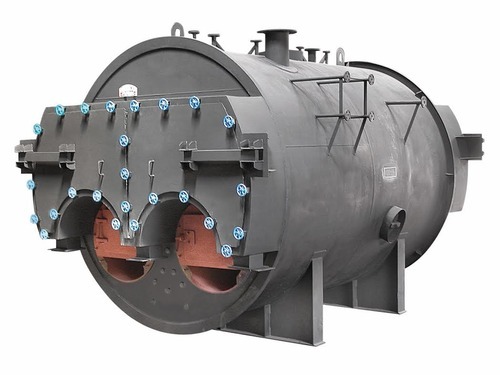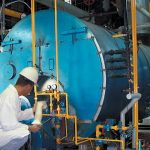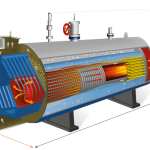Figs. 37 and 38 show a double- ended boiler. This is a common type for mercantile steamers, and is also fitted in a considerable number of ships of the Royal Navy. It is practically equivalent to two single-ended boilers placed back to back, but lighter for equal power, because the weight of the end plates and of much water in the spaces at the backs of the combustion chambers, is saved. ……….

Marine locomotive boilers.
Figs. 44 and 45 illustrate the locomotive type of boiler which has been used for marine purposes in torpedo boats, etc., in which the working pressures of steam have been from 120 lbs. to 180 lbs. per square inch. In this type of boiler there is a broad and practically rectangular fire-box at one end, the crown of which is strengthened by means of stays to the roof of the boiler, as shown. The example illustrated is by Yarrow & Co.

The air for the combustion of the coal is supplied from underneath, and there is considerable space and height above the fires to allow for the combustion of the gases. The barrel of the boiler beyond the furnace is cylindrical, and contains the tubes which lead to a smoke- box at the opposite end of the boiler. ……….
In both torpedo boats and torpedo gunboats, however, the locomotive boiler has now been abandoned in favour of the water-tube boiler described in the next chapter.



Comments are closed